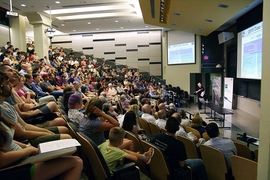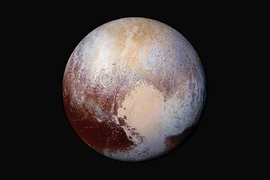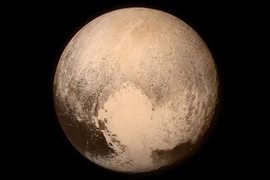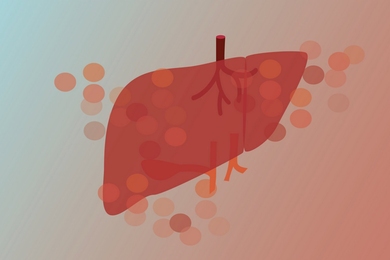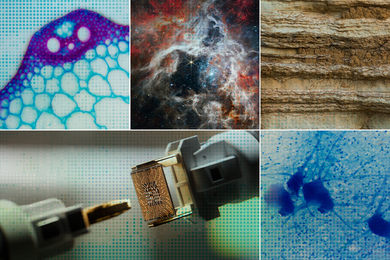One year ago Richard Binzel, a New Horizons mission co-investigator and a professor in MIT’s Department of Earth, Atmospheric and Planetary Sciences (EAPS), was sitting in Johns Hopkins University Applied Physics Laboratory in Laurel, Maryland, waiting with bated breath for the first data to begin arriving from Pluto. It was the culmination of a 26-year-long effort to rendezvous with the icy dwarf planet, the most distant body in the solar system we have visited so far.
Now, with the spacecraft almost 3 astronomical units (279 billion miles) from Pluto and headed ever deeper into the Keiper Belt, EAPS checked in with Binzel to find out what scientists have learned from the new observations, what’s next for New Horizons, and what personal impact the encounter has had on him.
Q: What are the top three things we have learned about Pluto since the encounter?
A: There are so many things, but first of all is the discovery that Pluto is an actively changing and evolving world, just like the Earth is. On Earth, it is water that changes the landscape by flowing in both liquid and ice. On Pluto, it is nitrogen that is responsible for most of the sculpting. (Nitrogen is a gas on Earth, but below the 70 Kelvin temperatures at Pluto, it goes through its liquid and solid phases.) We see evidence that nitrogen can flow on Pluto creating ponds, possible channels, and advancing glaciers. Astounding! Second is that we see evidence for million-year climate cycles on Pluto, again a far extreme from the climate we experience here on Earth. Third is that we see a very complex structure of hazes and photochemistry in Pluto’s atmosphere that teach us about meteorology in an entirely new physical regime. And as we have still only received about 80 percent of all the data so far, we are still looking forward to more discoveries to come.
Q: There was talk about a second target deeper in the Kuiper Belt. What is the status of that?
A: We are very excited that NASA has just approved our proposal to continue operating New Horizons as we traverse across the Kuiper Belt, a recently recognized region of our solar system containing millions of leftover building blocks that formed the planets. On Jan. 1, 2019, New Horizons will fly by one such object whose size is estimated to be about 25 miles across. Its charming name, 2014 MU69, is a moniker tied to its discovery date. Upon reaching that point, we will be about 1 billion miles beyond Pluto. Because the object MU69 is much smaller than Pluto, we will fly by much closer to get a good view – perhaps as close as 2,000 miles, or about four times closer than we came to Pluto. We will see details of its surface features and measure its composition of ices, all at the same time. Our curiosity is piqued because we will be looking at a sample of our solar system’s original chemistry, making our visit to MU69 not just a journey in space, but also a journey back in time by more than 4 billion years.
Q: The events of July 14, 2015, occur only rarely in a lifetime. What has the Pluto encounter meant for you personally?
A: More than anything, it has been the affirmation that persistence coupled with curiosity creates one of the strongest forces in the universe. Reaching Pluto has been the culmination of 40 years of my own scientific study and nearly three decades of effort to bring a spacecraft to the launch pad and finally reach its destination. But rather than rest on the laurels of New Horizons’ success, I am motivated to convey the spirit of undaunted exploration to our students so that they might achieve their own “impossible” goals. Who knows, maybe one of them will lead the next mission to further the exploration of Pluto.




